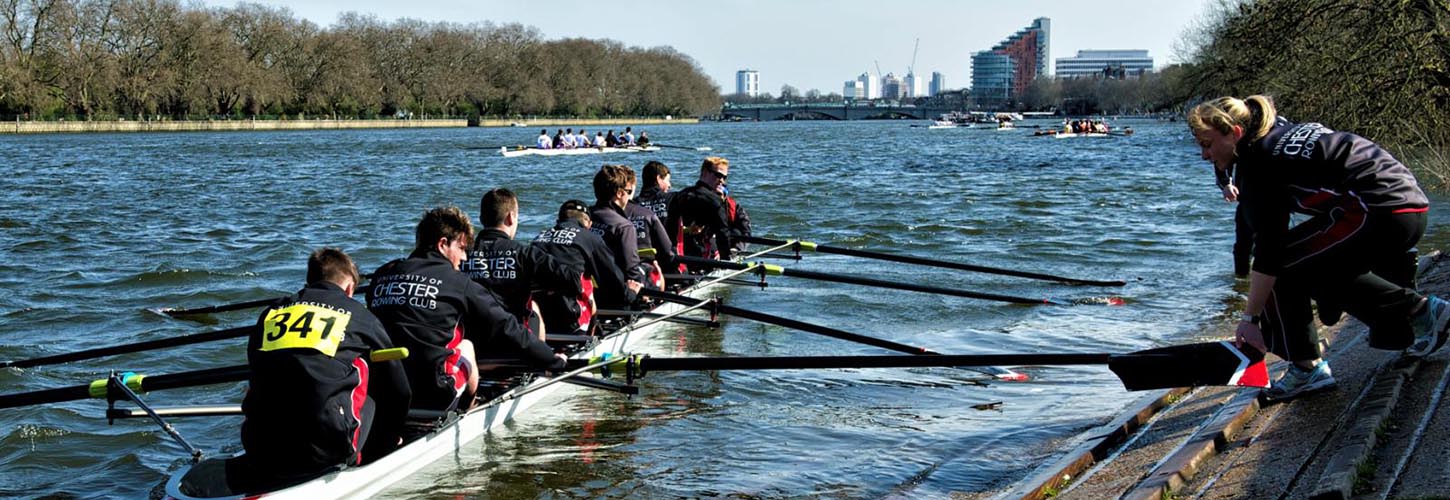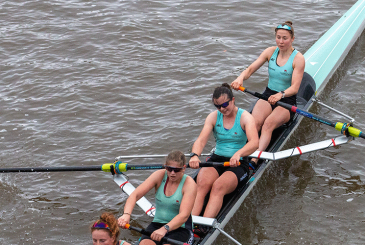Nick Hartland asks six rowers for their top tips for taking on the Championships course
If you’re racing on the Tideway next weekend then be sure to read the tips below.
1: Ben Harris’s Walton RC crew won the 2016 HORR Novice Club pennant
He says, “Steering is key, so watch ‘Coxing a Tideway Head‘ on YouTube beforehand. Own it together and learn about the stream and best line – cut corners, and you could lose 30 seconds.
“Bring a rigger-jigger on race day to share the workload and take that crew togetherness to the start and into the race.”
Steering is key, so watch ‘Coxing a Tideway Head’ on YouTube beforehand
2: Sophie Piper’s Mortlake Anglian and Alpha BC crew won the 2016 Women’s Eights Head Fin Award for exhibiting sporting values
“Never underestimate the Tideway – the wind can be freezing and it can roughen up quickly – so check the weather, especially the temperature, and expect the unexpected. In 2016 our cox box failed, my backstay broke and we helped in a crew close to hypothermia.
“Marshalling can take two hours so on top of racing kit wear leg warmers, a thick T-shirt, a long-sleeve top, a splashtop and a hat, and bring gloves and a plastic bag for dry kit for the row back.
“It’s also disconcerting to have no idea where you are mid-race, so read the instructions and learn the landmarks – like the bridges – to push off from. And know where the wind against tide will make it rough – splashboards are good if it’s blowing.”
Never underestimate the Tideway – the wind can be freezing and it can roughen up quickly
3: Henley RC’s Linda Thomas raced the 2017 Mother’s Day Vets Head with daughters Bethan and Kate
Her top tip is: “Take bin liners, one to wear over your kit if it’s raining and windy, and one to keep kit dry.
“Conditions can change fast, with waves suddenly smacking riggers, so keep tops dry for the row back, and combat wind chill with a cap or fleecy hat to stop heat loss through your head.
And don’t look for the finish, or the photos will catch you looking round, like me! Stay focussed in the boat on the rhythm.”
“Jelly babies are good to share and will give you a boost after a long row to the marshalling zone.”
Don’t look for the finish, or the photos will catch you looking round, like me!
4: Jeremy Greenwood joined Devil’s Elbow RC at its foundation in 2012
“When you’re waiting to start, gloves can stop hands freezing. Keep stretching and enjoy the spectacle – the first boats off probably contain Olympic champions, and Matthew Pinsent might marshal you!
“Stick to what you’ve practised and don’t over-rev it. At our first HORR, we overrated and being exhausted and falling apart is desperate.
“Ratio and run, not rating, is key to such a gruelling race, so focus on an effective rhythm and stay on top of technique – the Tideway can unsettle you and there’s always some bad water waiting to catch your blade.
Enjoy the spectacle – the first boats off probably contain Olympic champions, and Matthew Pinsent might marshal you!
5: Charlotte Scott’s St Andrew BC crew won the 2017 Women’s Eights Head Novice Small Club pennant
She says, “Arrive early to rig and change – it’s really busy and you want time to absorb the atmosphere and build the adrenaline.
“Before boating, think about your hard winter’s training to feed confidence. It’s the last part of the journey and that shared workload will help you finish in style.”
Before boating, think about your hard winter’s training to feed confidence
6: Russell Thornton’s Gloucester RC/Avon County RC crew won Mixed D Eights in the 2017 Vets Head
“Make sure the crew knows what commands to expect, and get the cox to encourage everyone when they’re hurting!
“The cox must be clear on the best line and how to deal with the scary situation of multiple boats overtaking. Be bold but sensible, and avoid clashes at all costs which lose time. Let other boats know loud and clear what you’re doing and stroke can alert the cox to boats closing in.
“Also be aware of wind direction/strength and a tailwind turning to head with choppy water, where you’ll need length and leg drive, and will need to lean back into it.
The cox must be clear on how to deal with the scary situation of multiple boats overtaking
“Finally row your own race, not the boats around you, except when you’re pushing for home.”
This article first appeared in the Rowing & Regatta magazine in February 2018.
4 further tips
Head of the River
Dimeji Ogunyoye, TSS says, “Stay relaxed! It’s a long race on a river renown for unforgiving conditions, so the more relaxed you are, the more head room you will have to focus on finishing the race as quickly as you can.”
Schools’ Head of the River
Alex Di Luzio, head coach at Tiffin School says, “Patience. If the conditions brutal, you have to roll with it. Keep calm ‘under fire’.”
Women’s Eights Head of the River
Ruth Naylor, Marlow RC says, “You can never have enough dry layers stashed in the boat! And always take Percy Pigs and Jelly Babies to keep you happy on the long slog home after the race!”
Veterans’ Head of the River
Lissie Fuller, cox at Worcester RC says, “Coxes, keep talking calmly down the course. It can get monotonous for the rowers if there are too many long periods of silence. Rowers, make sure you eat the right thing for a few days preceding the event. It makes a massive difference.”
These tips were first published in Rowing & Regatta in March 2017.
Photo credit: Gerard Brown










